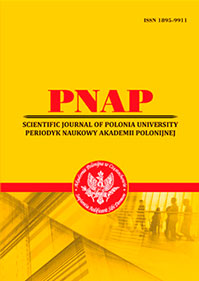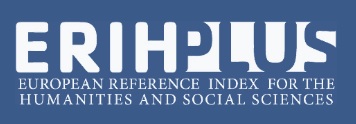КОГНІТИВНІ МЕХАНІЗМИ ТВОРЕННЯ СИНЕСТЕЗІЙНИХ МЕТАФОР У ВІРШОВАНИХ ТЕКСТАХ
Анотація
Стаття присвячена дослідженню ролі когнітивних механізмів у творенні синестезійних метафор у віршованих текстах. Зроблено припущення про те, що синестезійні метафори є лінгвокогнітивним засобом, який допомагає виразити абстрактні концепти через сенсорні образи та асоціації. На основі даних про розподіл активності в різних частинах мозку застосовано психолінгвістичний підхід до вивчення синестезійної метафори, а також розглянуто основні теорії щодо тісної взаємодії між мовними процесами, когнітивними механізмами та емоційною реакцією людини, а саме: гіпотезу спільних когнітивних механізмів обробки інформації, гіпотезу генетичних факторів та нейрофізіологічних аспектів синестезії. Особливу увагу приділено розумінню таких когнітивних механізмів, як асоціативна синтеза, метафоричне перенесення, семантичне перенесення, крос-модальна переробка (або мультимодальна інтеграція), ментальне відображення та просторова метафора, а також описано дію кожного із зазначених когнітивних механізмів на конкретних прикладах із поетичних творів українських та англійських авторів. Продемонстровано, як когнітивні механізми сприяють передачі характеристик одного сенсорного концепту до іншого, створюючи нові асоціації й образи, збагачуючи віршований текст. Виявлено вплив різних сенсорних модальностей, таких як зір, слух, дотик, нюх та смак, на вибір сенсорних образів для творення синестезійних метафор. Зроблено висновок про те, що когнітивні механізми відображають взаємодію звукосимволічного або звуконаслідувального компонентів у різних типах синестезійних метафор. Побудовано схеми-моделі синестезійних метафор, які мають полімодальний характер сенсорних комбінацій.
Посилання
Борисович О.В., Чаюк Т.А. Мовна синетезія та синестезійна метафора. Південний архів (філологічні науки), 2020. УДК 81’373.612.2:159.937.7 DOI https://doi.org/10.32999/ksu2663-2691/2020-82-8
Кушнерик В. І. Фоносемантизм у германських і слов’янських мовах. Чернівці : Рута, 2004. 416 с.
Левицкий В. В. Семантика и фонетика. Пособие, подготовленное на материале экспериментальных исследований. Черновцы : Изд-во Чернов. ун-та, 1973. 102 с.
Мацько Л. І. Стилістичні функції звуконаслідувальних слів. Культура слова : Республ. міжвід. збірник. 1982. Вип. 22. С. 35–39.
Black, M. (2000). The importance of metaphor. In A. Barcelona (Ed.), Metaphor and metonymy at the crossroads: A cognitive perspective (pp. 19-29). Mouton de Gruyter.
Black, M. (2004). More things in heaven and earth: Some reflections on the "explosion" of meaning. In R. W. Gibbs & G. J. Steen (Eds.), Metaphor in cognitive linguistics (pp. 23–39). John Benjamins Publishing.
Deroy O., Spence Ch. Why we are not all synesthetes (not even weakly so) // Psychon Bull Rev. 2013. Vol. 20. P. 643–664. URL: https://link.springer.com/article/10.3758/s13423-013-0387-2
Fauconnier G., Turner M. The Way We Think: Conceptual Blendings and the Mind’s Hidden Complexities. New York: Basic Books, 2002. 464 p.
Feder Kittay, Eva (2009), "Ideal theory bioethics and the exclusion of people with severe cognitive disabilities", in Lindemann, Hilde; Verkerk, Marian; Walker, Margaret Urban (eds.), Naturalized bioethics: toward responsible knowing and practice, Cambridge New York: Cambridge University Press, pp. 218–237, ISBN 9780521719407.
Fillmore, C. (1982). Frame semantics. In Linguistics in the Morning Calm (pp. 111–137). Hanshin Publishing Co.
Kittay, Eva (1987). Metaphor: its cognitive force and linguistic structure. Oxford New York: Clarendon Press Oxford University Press. ISBN 9780198249351.
Kittay, Eva (1994). A Network Model for the Generation of Metaphor (with Eric Steinhart). In Approaches to Metaphor , edited by J. Hintikka and Sandu. Synthese Library.Dordrecht: Kluwer Academic, 1994, pp. 41–94.
Lakoff G., Johnson M. Metaphors We Live. Chicago, 2003. 256 p.
Mankin J. Deepening understanding of language through synaesthesia: a call to reform and expand // Philosophical Transactions of the Royal Society B. 2019. URL: http://dx.doi.org/10.1098/rstb.2018.0350 (дата звернення: 10.07.2023).
Prandi M. Conceptual Conflicts in Metaphors and Figurative Language. Routledge, 2017. 336 p.
Rouw, R., Scholte, H. S. & Colizoli, O. Brain areas involved in synaesthesia: a review. J. Neuropsychol. 5, 214–242 (2011).
Saenz, M., & Koch, C. (2008). The sound of change: visually-induced auditory synesthesia. Current Biology, 18(15), R650-R651. DOI: 10.1016/j.cub.2008.06.036
Simner, J. (2019). Synaesthesia: A Very Short Introduction. DOI: 10.1093/actrade/9780198749219.001.0001. ISBN:978-0198749219.
Spence C. (2019) On the Relationship(s) Between Color and Taste/Flavor. doi.org/10.1027/1618-3169/a000439
Strik Lievers F. Figures and the senses Towards a definition of synaesthesia. Review of Cognitive Linguistics. 2017. № 15 (1). P. 83–101.
Turner, M. (1995). “As Imagination Bodies Forth!the Forms of Things Unknown”. Pragmatics and Cognition, 3:1 (1995) P. 179–185.
СПИСОК ІЛЮСТРАТИВНИХ ДЖЕРЕЛ
Тісдейл С «There Will Come Soft Rains». URL: https://uk.wikipedia.org/wiki
Українка Л. «Якби оті проміння золоті…». URL: https://www.l-ukrainka.name/uk/Verses/ Vidguky/Rytmy/JakbyOti.html
Франко І. Збірник віршів. URL: h t t p s : / / w w w. i - f r a n k o . n a m e / u k / Ve r s e s / IzDnivZhurby/VPleneri/4.html
Франко І. «Твої очі, як те море…». URL: http://poetyka.uazone.net/default/pages.phtml place=franko&page=lystia04
Blake William The Tyger. URL: https://en.wikipedia.org/wiki/The_Tyger
 ISSN
ISSN 


.png)




